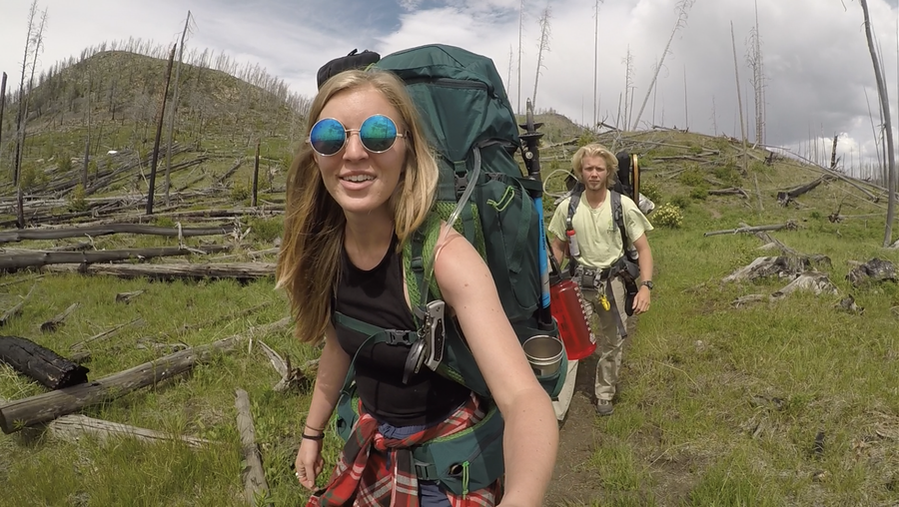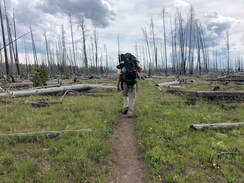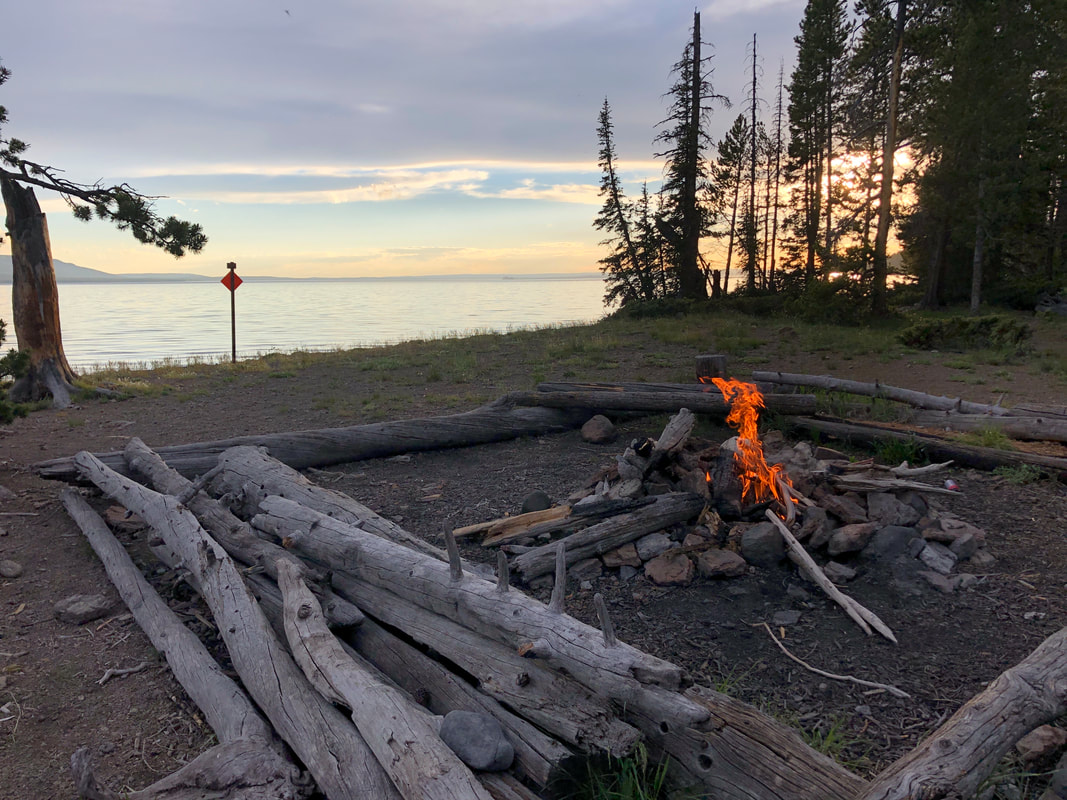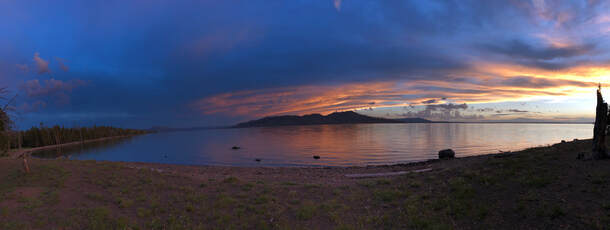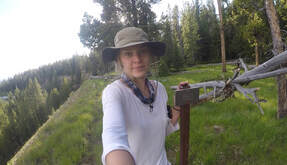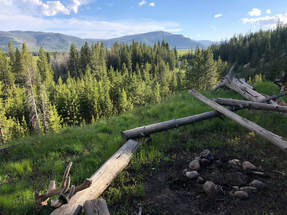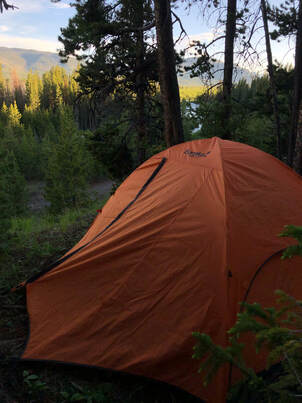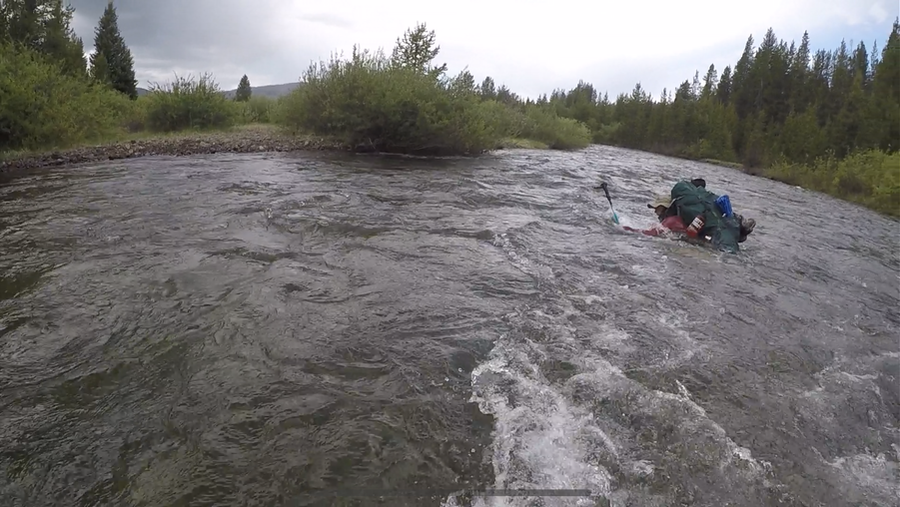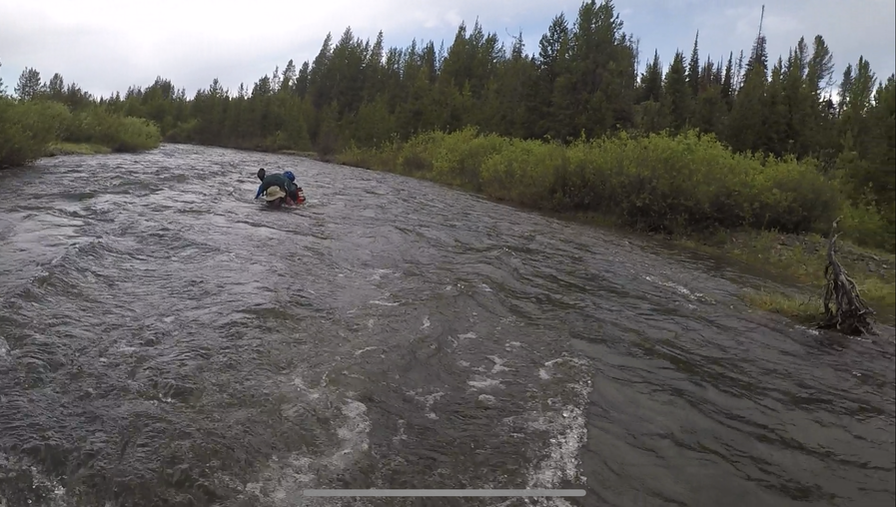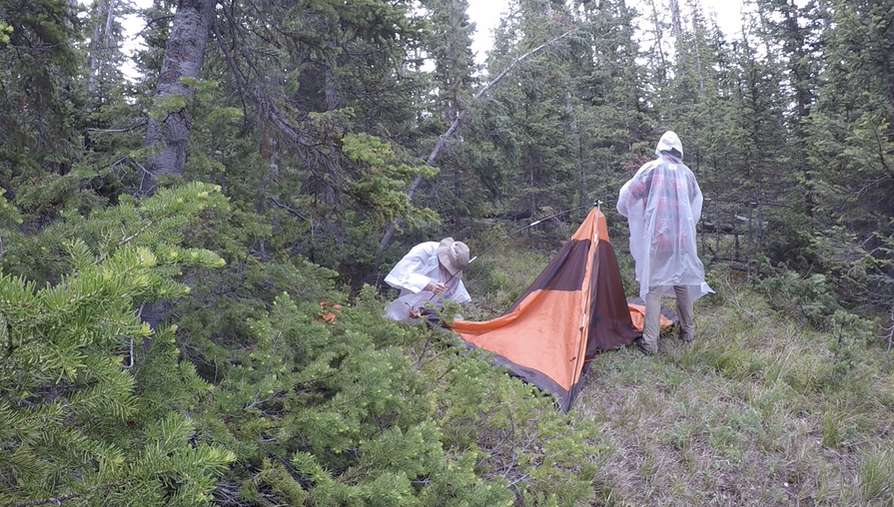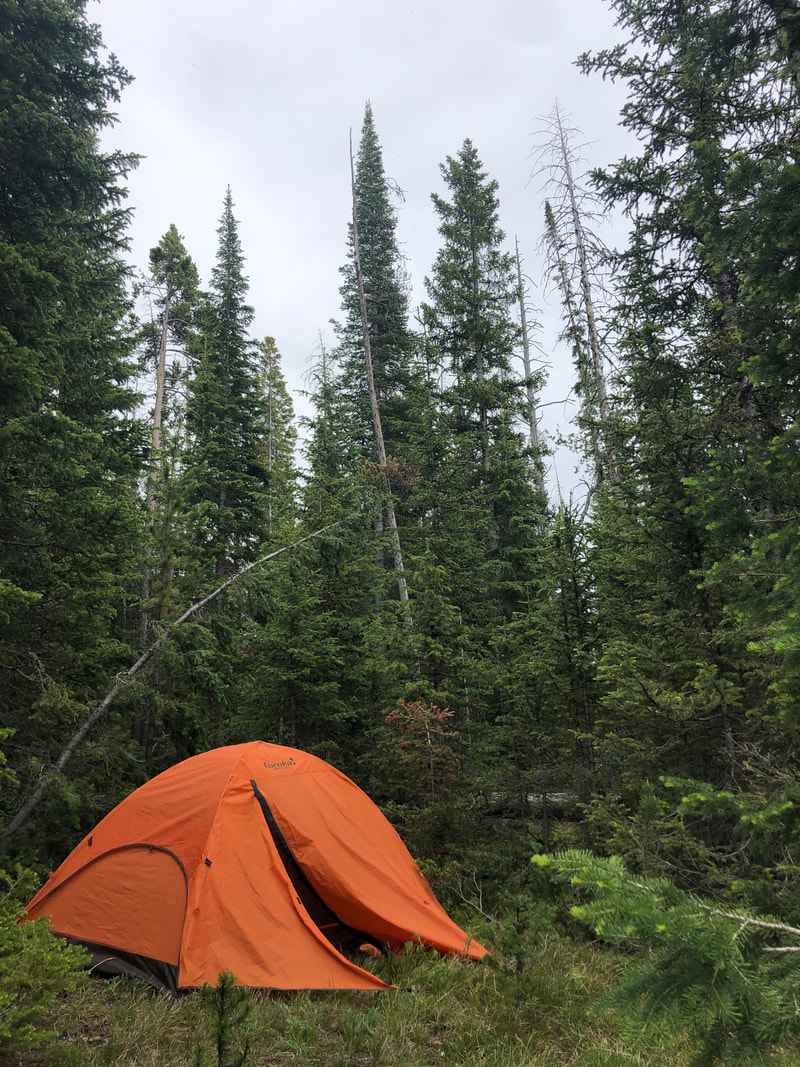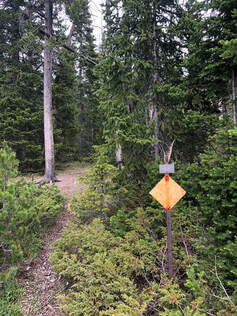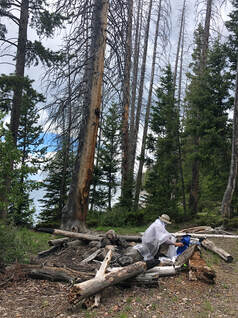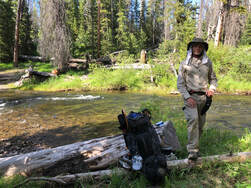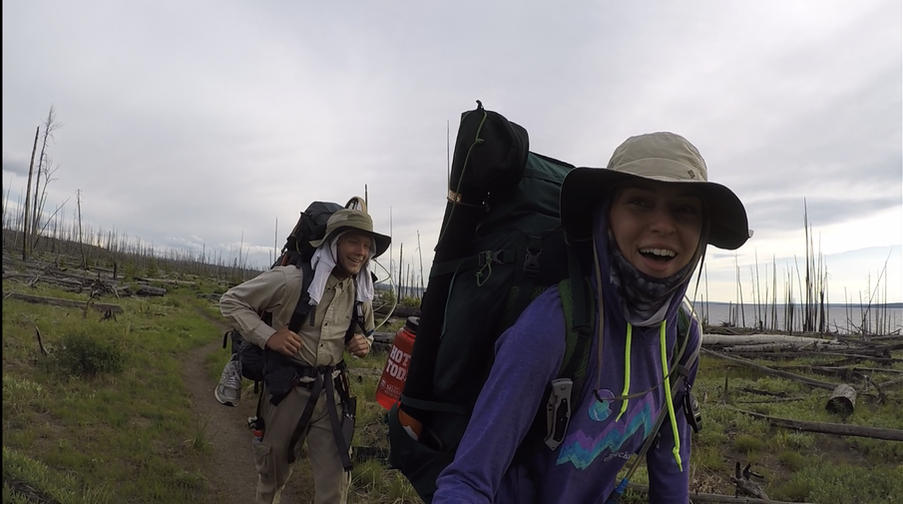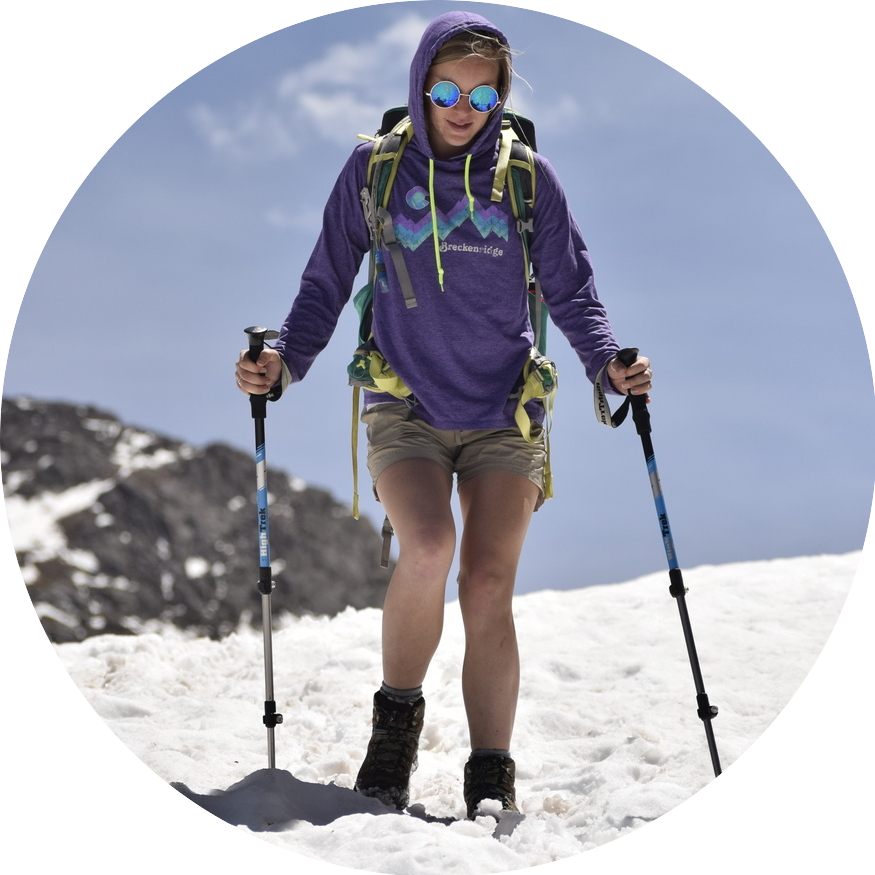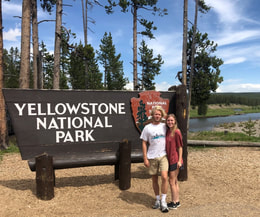 My birthday falls very close to the Fourth of July, so every year, I enjoy taking a weeklong trip to celebrate both events. This year’s trip was a hard one to plan though. Record breaking snowfall in the Northern and Midwestern U.S. left some of the places I planned to visit with my travel partner, John, unobtainable. After dozens of calls to Park Rangers and Forestry Offices across Colorado, Wyoming, Montana and Idaho, we found that Yellowstone National Park was snow free and hikeable. Right away, we sat down and started planning an epic 60-mile hike in the southeastern corner of the park. You can see our entire hike on our YouTube channel here! 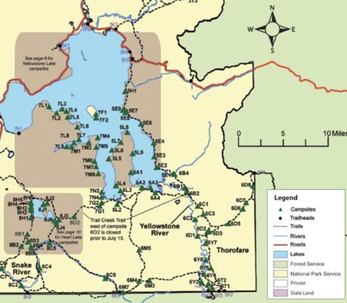 We were instantly drawn to the Thorofare Trail. This area is deemed one of the most “remote” parts of the country. It follows the Yellowstone Lake and River to the park boundary and sits nearly 25 miles from any road in every direction. It took a great deal of research to make sure we would be safe in bear country when so far from rescue. We have never done a trip this long and intense before. We spent days planning out our trail, buying new gear, and packing up our campfire meals for the week long adventure. You can read all about our research, planning, and packing process here. 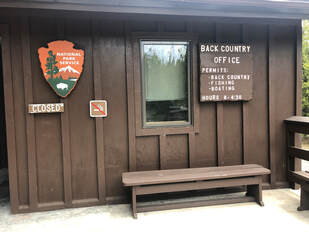 Once we were all packed and ready to go, we set out from Denver and arrived at the backcountry office near the southern entrance of Yellowstone 9 hours later. We met with the park ranger to discuss our plans and receive all of our necessary passes. The ranger made some phone calls while we watched a 20 minute safety video about how to handle different situations in the backcountry. He told us that we would have to be very careful because of nearby bear activity and high water in some of the creeks we would have to traverse. We felt that we were prepared mentally and with equipment, so we signed all of the necessary paperwork to confirm that we knew the dangers and paid our fees. To see what gear we carried check out our detailed post here - it lists our most essential items and the few things we wished we had chosen differently. 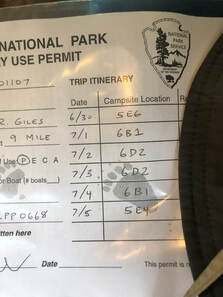 It cost $3 per night per person to camp in the backcountry. We also picked up Yellowstone fishing licenses which were $25 per person for 7 days (3 day and season long permits are also available), and it is important to note that Wyoming Fishing licenses are not valid inside the park. Our total came to $86 for both of us. After the ranger handed us our permits and a detailed map, we headed on our way. We arrived at the Nine-Mile Trailhead on the east side of Yellowstone Lake around 4 pm. With full packs and big smiles, we started our journey into the unknown. Trail Day One – Getting going: 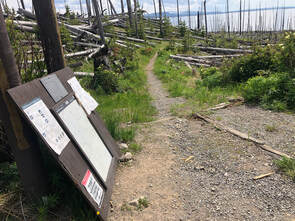 Our first day was an eight-mile hike, along the banks of Yellowstone Lake, to campsite 5E6. The trail did not start off as scenically as either one of us was expecting. We started in a valley of downed trees that had been burned by fires decades ago. For the first mile or so, these charred and damaged trees surrounded us. The lake provided a stunning background behind the broken limbs and blackened stumps and helped make the journey feel less eerie until we entered the wooded and swampy areas. 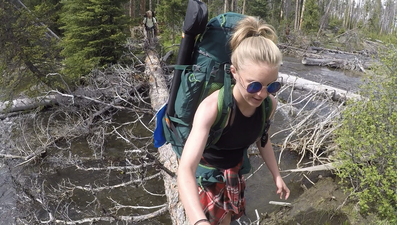 We had to cross several streams on the first day starting with the bigger Cub and Clear Creeks. Each one had large rocks or fallen trees we could walk across making for fairly easy crossings. When we got down around mile 6 near campsites 5E9-5E7, the trail started to change. The Meadow Creek watershed area is where we really entered into the deep woods. The trail became muddy and marshy from snowmelts, recent rainfalls, and little sunlight that broke through the heavy forest canopy. We also noticed a change in the environment by the bugs. 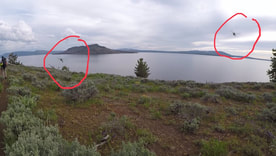 From here on out, the trail was swarmed with hundreds of pestering mosquitoes, flies, and gnats. I really wish I could put into words how many bugs there were on this trail. It was something we were absolutely not prepared for. We quickly learned that we had underestimated the amount of bug spray and bite treatment we would need for the week. It was one of the more valuable lessons we learned on this trip, and you can read about our 10 biggest takeaways from our first backpacking trip in this post! 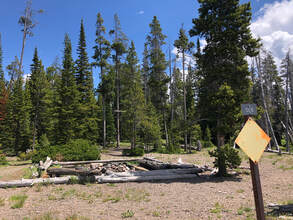 Campsite marker from the banks of the lake, there is also one on the trail. Campsite marker from the banks of the lake, there is also one on the trail. The heavily wooded area ended, and for the rest of the trail, we went in and out of woodsy patches and flowering valleys along the shores of Yellowstone Lake. We caught a break in the curtain of bugs just in time to see the marker for our campsite about two miles after crossing over Meadow Creek. We walked up around 8:30 pm with just enough sunlight to set up our tent and get a fire going before nightfall. Every campsite we visited in the backcountry had a designated campfire area complete with a fire ring, logs arranged around it for seating, and structures created by park rangers for hanging food high enough to be kept away from bears. We staked out everything and set up our tent in accordance with the wind so that the food smells wouldn’t bring bears toward us in the night. John tried his hand at fly fishing while I prepared our dinner. We sat around the fire, ate our meal in awe of the number of stars we could see, and discussed the sheer grandness of our visible Milky Way. This was one of the only clear evenings of the whole week, but still, it rained that night and well into the morning. Trail Day Two – Our first attempt: 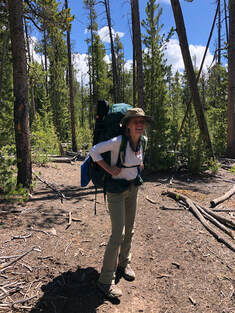 Day two was one of our longer planned days, but we weren’t able to leave our tent until almost 10:30 am. By the time we ate breakfast and packed up our tent and gear, it was almost 1 pm when we got back on the trail. We had almost 10 miles ahead of us as we attempted to make it to campsite 6B1. I say attempted, because that was all we were capable of on this day. The slight exhaustion and the soreness from the day before settled in and made for a fairly hard day for us. Also, starting in the middle of the day made for a much hotter walk than either of us wanted, because we were covered head to toe to protect against the vicious bugs. 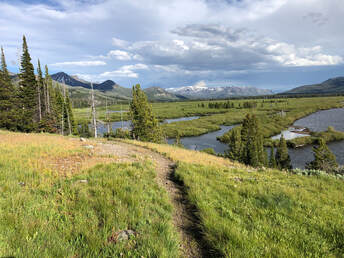 The hike was very similar to the day before’s hike with periods of thick forest and open valleys that exposed views of the lake. The exception was that this day featured many more wildflowers. Instead of having forest fire damage and downed trees, the open parts of this trail were grassy hillsides covered in purple and yellow flowers stretching into the distance. As we got closer to the southeastern arm of Yellowstone Lake, we started to see snowy caps on some far away mountains. It baffled us that the peaks remained frozen in the heat of July. 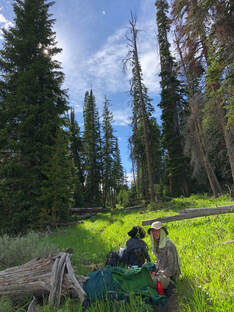 After lots of stops, swats at bugs, and a few slips, we had gone eight miles out of our arranged ten. We had to make the decision to not continue on to our campsite at 6B1 and stop at 5E1 because of exhaustion and a dangerous looking Beaver Dam Creek crossing. It was almost 9 pm when we arrived at the ridgeline campground. We had just a few minutes of sunlight left when we set up our campsite and started a campfire. We were both a little disappointed in our progress that day, because we were walking at nearly half the speed we normally do when hiking, and we discussed ways to make up the ground we had missed. 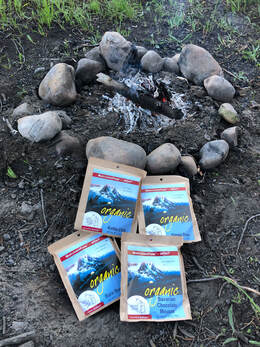 For the first time, we tried our Mary Jane’s dehydrated meals and enjoyed a hearty bag of black bean soup and two burritos each. We were really making sure to load up to help fuel our next day on the trail. Before departing on our trip, we spent a great deal of time comparing dehydrated meals, and we felt that we made the best decision by choosing Mary Jane’s meals. The sodium content, calorie amounts, and organic ingredients were great features, but the actual taste and heartiness of the meals convinced us to keep using Mary Jane’s for every trip we take. If you want to read more about our food prep and decision process, check out this post! We weren’t able to enjoy the night sky for long before storms started to roll in over the mountainous horizon, so we hopped in our tent after dinner and let the thunder put us to sleep. We woke up early the next morning to get a good start on the day. Trail Day Three – The Incident: 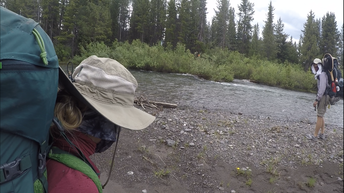 As we were packing up that morning, two park rangers arrived at our site. They asked to see our permits and asked why we didn’t make it to our designated stop. We told them that the approaching storms had worried us and that the water of Beaver Dam Creek didn’t seem safe to cross so close to nightfall. They agreed that we made the right decision and confirmed that the creek was flowing swiftly and reminded us that we would need to be careful when crossing. They told us to get back on track with our permits and try to not stray from them too much. We told them we’d do our best. Once we were packed and ready to go, we hiked down the hill to Beaver Dam Creek around 10 am. We got to the water, rolled up our pants, put our water shoes on, and I pulled out my hiking poles. We thought we were prepared for the crossing, but those thoughts of preparedness turned out to be my downfall – literally. 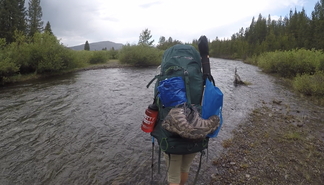 John and I approached the rushing water with too much confidence. We arrogantly but unintentionally ignored some of the things we had been shown in the safety videos and been told by the rangers. When we entered the water, it was only about shin deep and lead us to falsely think we could cross it independently. Instead, the creek deepened quickly and the current got stronger as we went further in. Instead of holding hands or linking arms as we had been shown, we walked side by side until I slipped. The water completely knocked my feet out from under me, and I started to tumble. The weight of my bag and the gushing water coming over me made it impossible for me to gain my footing back or even stabilize myself enough to stop floating down the river. In a matter of seconds, I was being carried downstream dozens of yards from John and the shoreline. Never in my life had I yelled out for help the way I did in this situation. John instantly ran to shore and dropped his bag in hopes of helping me. Somehow, I managed to grab a nearby tree limb and pull myself out of the water before he could arrive. 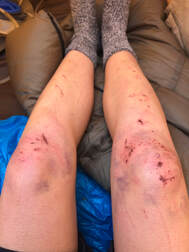 It wasn’t until I was on the bank of the river that I realized I had badly hurt myself in the fall. When I tried to stand up, my right knee went out and started throbbing. I looked down and found that I was bleeding and already covered in bruises. John ran to me, helped me get up, and grabbed my gear. We backtracked the few hundred feet we had just hiked to the creek and arrived back to the safety of campsite 5H1. After cleaning up my wounds and laying out all of my clothes and gear to dry, John and I reevaluated what just happened and realized how big some of the mistakes we made were. It was another lesson we had to add to our experiences, and we both agreed to never underestimate a river, stream, or creek ever again. I was glad we put so much consideration into what was in our first aid kits, you can read about what we carried in this post. My cuts and scrapes could have been easily infected, but we made sure to take good care of them immediately. 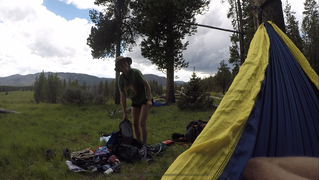 We spent the rest of the day recuperating, relaxing, and soothing the wounds from that morning. We made the decision to stay the night at 5H1 again and head back for the trailhead the next day. It was not an easy or fun discussion especially considering that we were only about half of the way down the trail that we were hoping to finish, but we knew it was the right decision. We set up our hammock and took a nice mid afternoon nap before walking back down to the creek to try our hand at some fly fishing. It was really the first opportunity we had to take significant time to try it out. Even though it wasn’t very successful, it was still fun practicing our casts and rigging up the gear. When the bugs got bad and the sun started to set, we headed back up to the campsite to make some dinner. We enjoyed our Mary Jane’s again just before a storm rolled over us. We slept like babies to the sound of pouring rain and regained our energy for the next day's hike. Day Four – The start of the return: 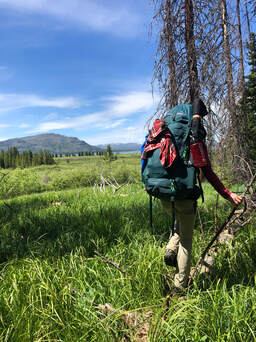 Since the timeline we were given was all messed up, we set off on the trail not knowing what campsite we were going to make it to or how long of a day we had ahead of ourselves. We didn’t really care though. The lack of structure meant that we could take our time getting back and make more stops to better enjoy the trail and wilderness. We were having a very strong day, because the lazy day before really gave us our strength back. We were going at our usual 2 mile per hour rate until John let his focus slip and had a fall that resulted in a punctured palm. Luckily, we were only about a mile from a campsite, so he cleaned, treated, and bandaged the hole in his hand before we pushed on to the site. 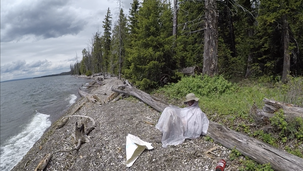 We arrived at campsite 5E4 around 1:30 pm and better doctored John’s wound before an afternoon storm rolled in. We managed to get our rain gear set up and enjoy a lakeside lunch before we had to take shelter. The storm lasted a good little while. Since we didn’t have a plan for the night, we decided to set up camp when the rain stopped even though it was only around 4 pm. We managed to make a small fire with the damp wood around us and watched as the lake started to get dark and choppy again. This night, we weren’t as fortunate as others and had to eat our meals inside of our tent, because another storm came in so quickly. 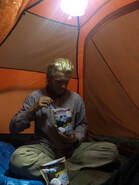 The dehydrated meals’ packaging made it so easy to cook and eat them that we actually enjoyed sitting in the cozy ambiance of the tent for our meal. We went to bed after getting rid of our food waste and hanging up our bear bag. It was still raining, but we knew that it was necessary to get all of our food waste and gear out of the sleeping area. Day Five – The final stretch: 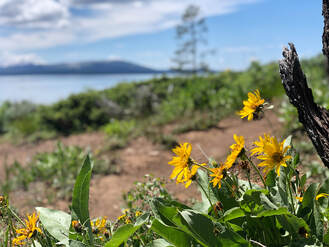 After a good night’s rest and a very hearty breakfast, we got on the trail around 9 am on what would turn out to be our last day on the trail. We were able to cover more ground than we expected, since our bags were getting a little lighter from consuming food and medical supplies, and we were well rested from a couple of shorter days. 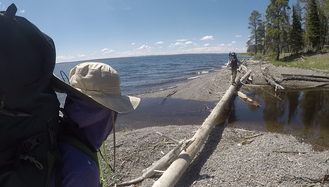 When we stopped for lunch at campsite 5E8, we decided to go for about 3 more miles to reach the last campsite before the trailhead. We were never able to find campsite 5H1, because it was still closed for the season. Before we knew it, we were at Cub Creek and only about a mile and half from the trailhead. We knew we were heading into the forest of dead trees and sunshine, so we stopped one last time for a power snack and to refill our waters. 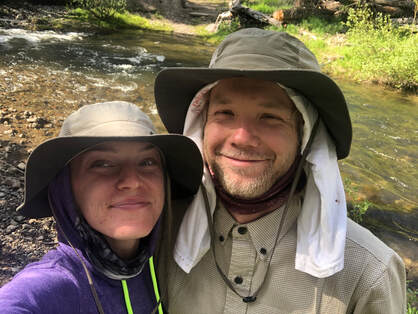 We were off the trail and back at my car around 5 pm on the Fourth of July which gave us enough time to catch some fireworks. Even though we didn’t make it nearly as far as we wanted, the timing ended up being perfect to allow us 2 ½ days to travel around the park and see its more touristy highlights. You can see photos and read our post about our road trip around the park here. We learned a lot on our first multi-night backpacking trip, and doing it in our nation’s first national park made for an incredibly special trip. Since we didn’t finish the trail or get to fish the Yellowstone River, we are already getting plans in place to return to this remote destination and successfully explore its entire length. You can see our entire hike on our YouTube channel here!
0 Comments
Leave a Reply. |
Talkin' 'bout Tacos:
I'm Taylor, aka Tacos! I am sharing my journeys and experiences from across the world hoping to inspire travel and adventure in all who read. Archives
June 2024
|
